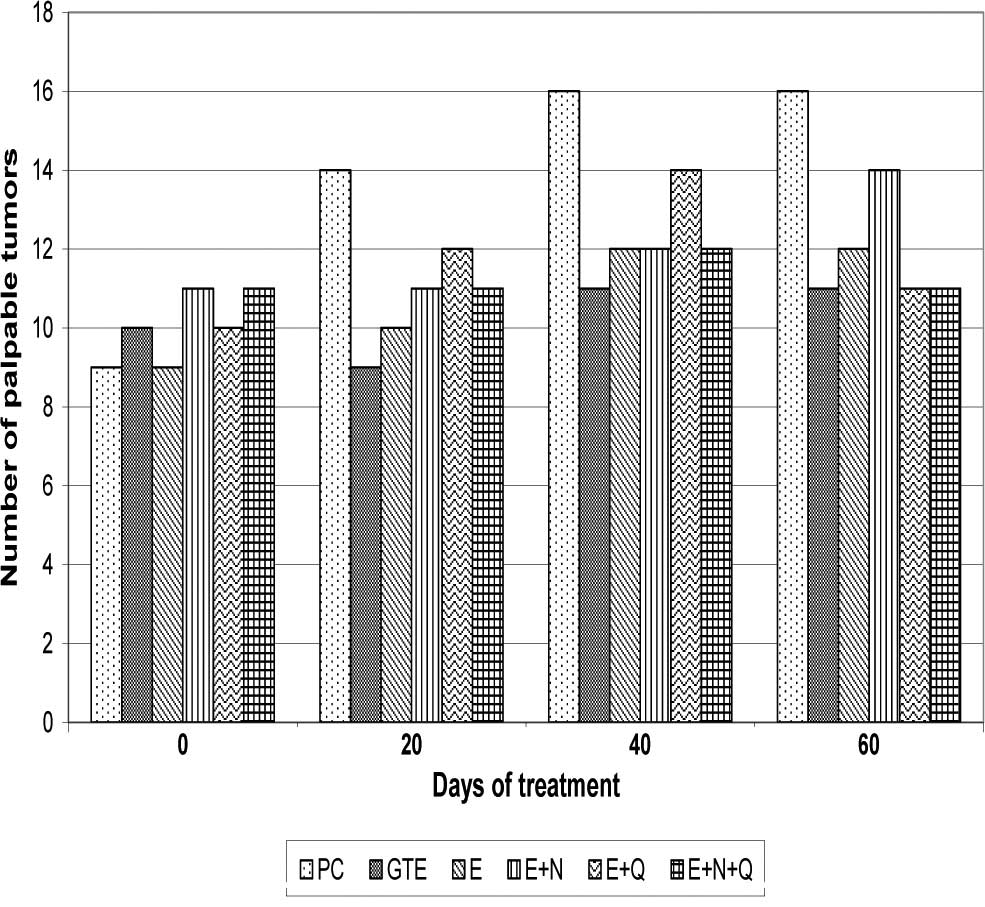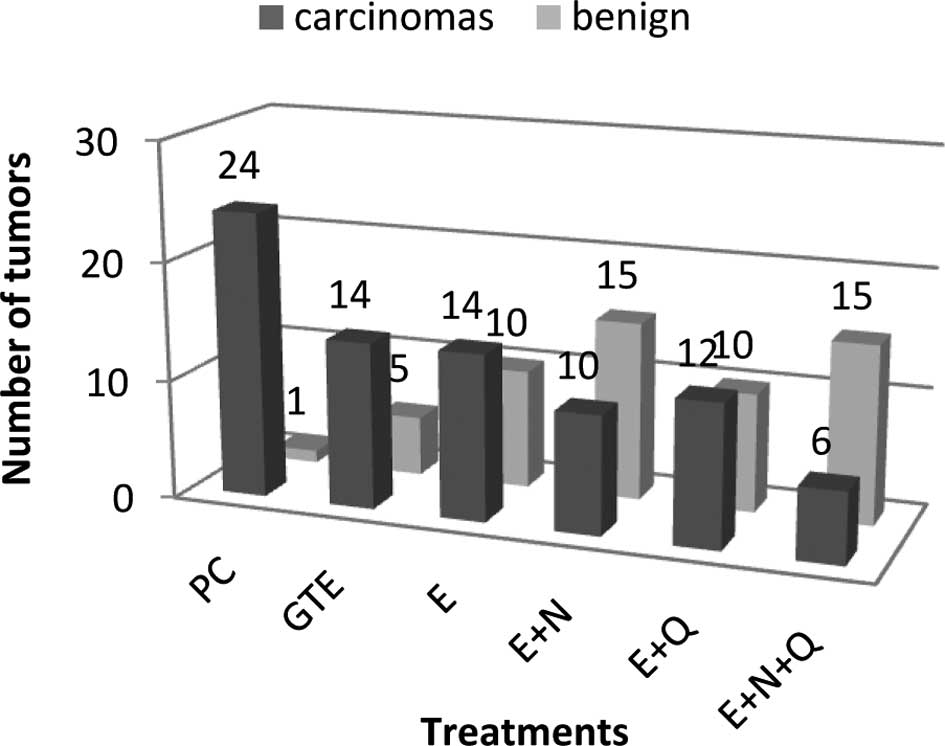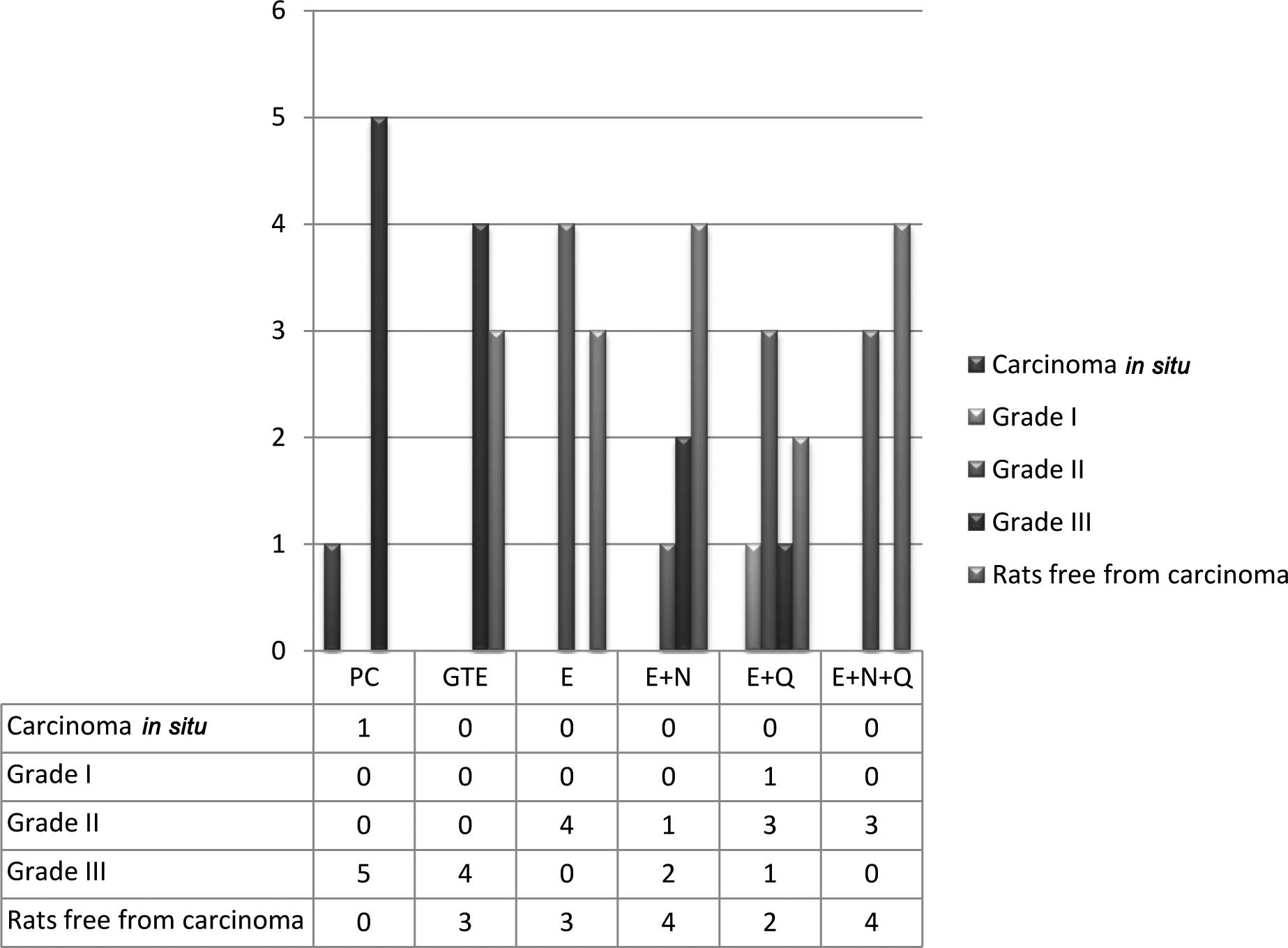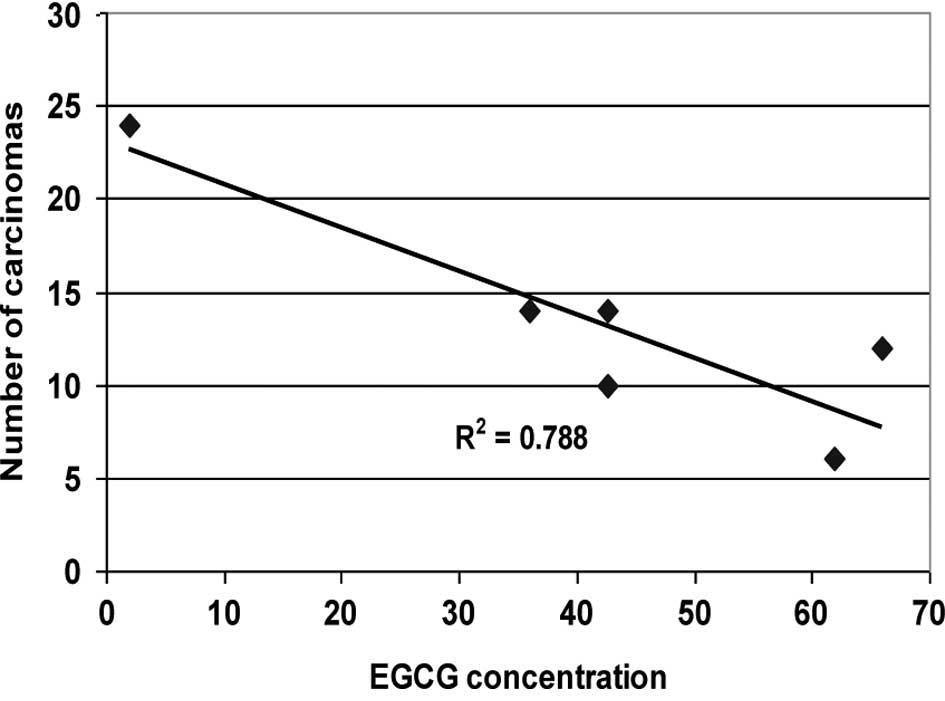|
1
|
Gullino PM, Pettigrew HM and Grantham FH:
N-Nitrosomethylurea as mammary gland carcinogen in rats. J Natl
Cancer Inst. 54:401–414. 1975.PubMed/NCBI
|
|
2
|
Moon RC, Grubbs CJ, Sporn MB and Goodman
DG: Retinyl acetate inhibits mammary carcinogenesis induced by
N-methyl-N-nitrosourea. Nature. 267:620–621. 1977. View Article : Google Scholar : PubMed/NCBI
|
|
3
|
McCormick DL, Adamoski CB, Fiks A, et al:
Lifetime dose-response relationships for mammary tumor induction by
a single administration of N-methyl-N-nitrosourea. Cancer Res.
41:1690–1694. 1981.PubMed/NCBI
|
|
4
|
Thompson HJ and Meeke LD: Induction of
mammary gland carcinomas by subcutaneous injection of
1-methyl-1-nitrosourea. Cancer Res. 41:1628–1629. 1983.PubMed/NCBI
|
|
5
|
Thomson HJ and Adlakha H: Dose-response
induction of mammary gland carcinomas by intraperitoneal injection
of 1-methyl-1-nitrosourea. Cancer Res. 51:3411–3415.
1991.PubMed/NCBI
|
|
6
|
Thompson HJ, McGinley JN, Rothhammer K, et
al: Rapid induction of mammary intraductal proliferation, ductal
carcinoma in situ and carcinomas by the injection of sexually
immature female rats with 1-methyl-1-nitrosourea. Carcinogenesis.
16:2407–2411. 1995. View Article : Google Scholar
|
|
7
|
Green A, Shilkaitis A and Christov K:
4-(Hydroxyphenyl) retinamide selectively inhibits the development
and progression of ductal hyperplastic lesions and carcinoma in
situ in mammary gland. Carcinogenesis. 20:1535–1540. 1999.
View Article : Google Scholar : PubMed/NCBI
|
|
8
|
Thompson HJ, Singh M and McGinley J:
Classification of premalignant and malignant lesions developing in
the rat mammary gland after injection of sexually immature rats
with 1-methyl-1-nitrosourea. J Mammary Gland Biol Neoplasia.
5:201–210. 2000. View Article : Google Scholar : PubMed/NCBI
|
|
9
|
Kotsopoulos J, Sohn KJ, Martin R, et al:
Dietary folate deficiency suppresses N-methyl-N-nitrosourea-induced
mammary tumorigenesis in rats. Carcinogenesis. 24:937–944. 2003.
View Article : Google Scholar : PubMed/NCBI
|
|
10
|
Kotsopoulos J, Medline A, Renlund R, et
al: Effects of dietary folate on the development and progression of
mammary tumors in rats. Carcinogenesis. 20:1603–1612. 2005.
View Article : Google Scholar : PubMed/NCBI
|
|
11
|
Melancon K, Cheng Q, Kiefer TL, et al:
Regression of MNU-induced mammary tumors with combination of
melatonin and 9-cis-retinoic acid. Cancer Lett. 227:39–48. 2005.
View Article : Google Scholar : PubMed/NCBI
|
|
12
|
Roomi MW, Roomi NW, Ivanov V, et al:
Modulation of N-methyl-N-nitrosourea induced mammary tumors in
Sprague-Dawley rats by combination of lysine, proline, arginine,
ascorbic acid and green tea extract. Br Cancer Res. 7:R291–R295.
2005. View
Article : Google Scholar : PubMed/NCBI
|
|
13
|
Roomi MW, Ivanov V, Kalinovsky T, et al:
In vivo and in vitro antitumiorigenic activity of a mixture of
lysine, proline and green tea extract on human breast cancer cell
lines MDA-MB-231 and MCF-7. Med Oncol. 22:129–138. 2005. View Article : Google Scholar : PubMed/NCBI
|
|
14
|
Ahmad N, Feyes AL, Nieminen R, et al:
Green tea constituent epigallocatechin-3-gallate and induction of
apoptosis and cell cycle arrest in human carcinoma cells. J Natl
Cancer Inst. 89:1881–1886. 1997. View Article : Google Scholar : PubMed/NCBI
|
|
15
|
Kale A, Gawande S, Kotwal S, et al:
Studies on the effects of oral administration of nutrient mixture,
quercetin and red onions on the bioavailability of epigallocatechin
gallet from green tea extract. Phytother Res. July 7–2009.(Epub
ahead of print).
|
|
16
|
Thompson HJ, McGinley JN, Wolfe P, et al:
Temporal sequence of mammary intraductal proliferation, ductal
carcinomas in situ and adenocarcinomas induced by
1-methyl-1-nitrosourea in rats. Carcinogenesis. 19:2181–2185. 1998.
View Article : Google Scholar : PubMed/NCBI
|
|
17
|
Gawande S, Kale A and Kotwal S: Effect of
nutrient mixture and black grapes on the pharmacokinetics of orally
administered (−) epigallocatechin-3-gallate from green tea extract:
a human study. Phytotherapy Res. 22:802–806. 2008.PubMed/NCBI
|
|
18
|
Graham HD: Stabilization of prussian blue
color in the determination of polyphenols. J Agric Food Chem.
40:801–805. 1992. View Article : Google Scholar
|
|
19
|
Russo J, Gusterson BA, Rogers AE, et al:
Comparative study of human and rat tumorigenesis. Lab Invest.
62:244–278. 1990.PubMed/NCBI
|
|
20
|
Bloom HJG and Richardson WW: Histological
grading and prognosis in breast cancer. Br J Cancer. 11:359–377.
1957. View Article : Google Scholar : PubMed/NCBI
|
|
21
|
Dalton LW, Dage DL and Dupont WD:
Histologic grading of breast carcinoma: a reproducibility study.
Cancer. 73:2765–2770. 1994. View Article : Google Scholar : PubMed/NCBI
|
|
22
|
Elston CW: Grading of invasive carcinoma
of the breast. Diagnostic Histopathology of the Breast. Page DL and
Anderson TJ: Edinburgh Churchill Livingston; New York: pp. 300–311.
1987
|
|
23
|
Analyse-it for Microsoft Excel (version
2.20). Analyse-it Software Ltd. http://www.analyse-it.com/.
2009
|
|
24
|
Ahlers I, Solar P, Buresova A, et al: Very
low sensitivity of Wistar:Han female rats to chemocarcinogens in
mammary carcinogenesis induction. Neoplasma. 45:373–376.
1998.PubMed/NCBI
|
|
25
|
Bojkova B, Ahlers I, Kubatka P, et al:
Repeated administration of carcinogen in critical developmental
periods increases the susceptibility of female Wistar:Han rats to
mammary carcinogenesis induction. Neoplasma. 47:230–233. 2000.
|














